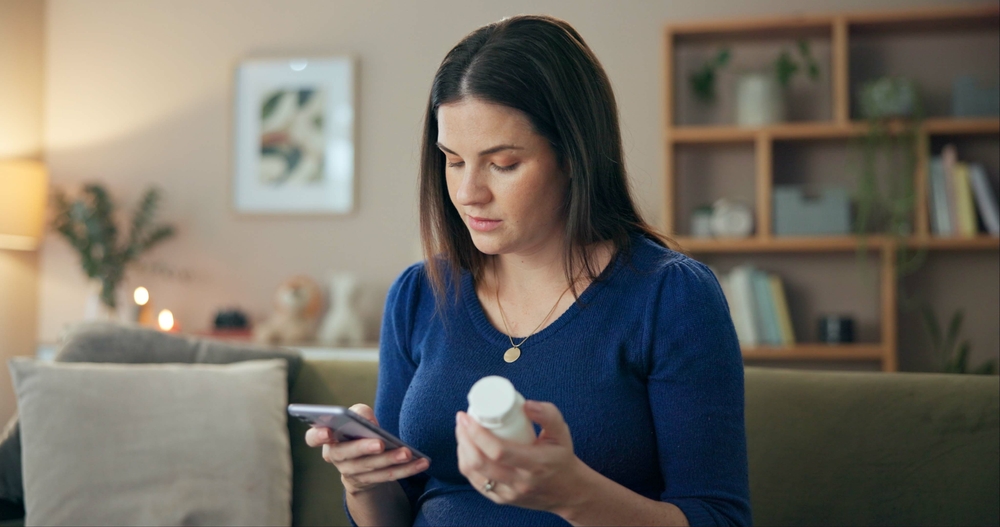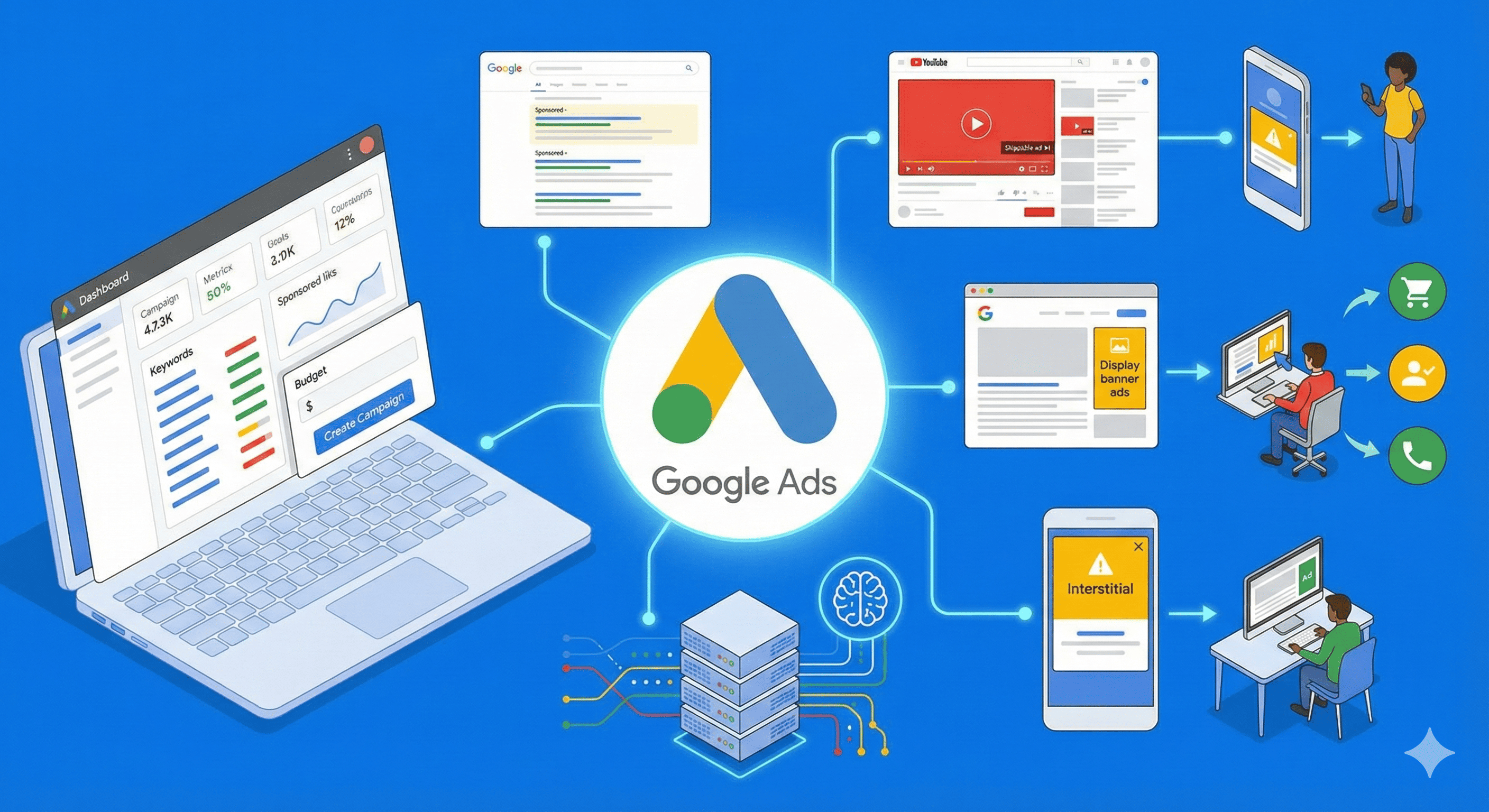
Australia's healthcare services market reached $201.8 billion in 2024 and is projected to grow to $382.3 billion by 2033, representing a compound annual growth rate of 6.8%. Yet despite this massive expansion, many healthcare providers across the country struggle to effectively reach and engage patients through digital channels. The healthcare industry faces unique marketing challenges that other sectors simply don't encounter—stringent privacy regulations, complex compliance requirements, sensitive patient concerns, and the critical importance of trust and credibility in every interaction.
The digital transformation of healthcare has accelerated dramatically in recent years. Telehealth consultations now exceed 2.5 million annually, mobile health apps have become essential tools for patient engagement, and AI-powered diagnostics are revolutionising treatment accuracy. For Australian healthcare providers—from GP clinics and specialists to hospitals, aged care facilities, and allied health practices—digital marketing is no longer optional. It's the primary channel through which patients discover providers, research treatments, book appointments, and engage with ongoing care.
Quick Answers: Healthcare Digital Marketing Fundamentals
Why do healthcare providers need digital marketing?
Healthcare digital marketing is essential because 77% of patients use search engines before booking appointments. With Australia's digital health market growing from $7.7 billion to $28.6 billion by 2033, patients expect to find providers online, research treatments digitally, and book appointments through websites, making digital presence critical for patient acquisition and retention.
What digital marketing channels work best for healthcare providers?
Search engine optimization (SEO) delivers the highest ROI for healthcare providers, generating 350% more traffic than social media. Google Business Profile optimization captures local patients, content marketing builds trust and authority, email marketing achieves 41.2% open rates, and social media platforms like Facebook create community engagement and showcase practice culture.
How is healthcare marketing different from other industries?
Healthcare marketing faces unique challenges including strict AHPRA compliance requirements, patient privacy regulations, restrictions on testimonials and outcome guarantees, and the critical importance of trust and credibility. Healthcare providers must balance promotional goals with evidence-based information, ethical advertising standards, and patient vulnerability considerations that don't apply to other industries.
What compliance issues affect healthcare digital marketing?
Healthcare digital marketing must comply with AHPRA advertising guidelines prohibiting misleading claims and guaranteed outcomes, Privacy Act requirements for patient data protection, TGA standards for therapeutic advertising, and anti-spam legislation for email communications. Patient stories require explicit written consent, and all health claims must be evidence-based and appropriately qualified.
.png)
The Australian Healthcare Digital Landscape
Australia's digital health market was valued at $7.7 billion in 2024 and is expected to reach $28.6 billion by 2033, exhibiting a remarkable 15.7% CAGR. This explosive growth reflects fundamental shifts in how Australians access healthcare information and services. Patients increasingly expect the convenience and accessibility of digital-first experiences they've grown accustomed to in other aspects of their lives. According to the Australian Digital Health Agency, digital health adoption has accelerated significantly, with My Health Record now used by over 23 million Australians, demonstrating the population's readiness for digital healthcare solutions.
Consider the current reality facing Australian healthcare providers. Approximately 47.3% of Australians have one or more chronic conditions requiring ongoing management and continuous medical engagement. The population is rapidly ageing, with dementia cases expected to exceed 459,000 by 2025. Cardiovascular disease affects 1.2 million Australians, accounting for 27% of all deaths. Mental health awareness has created unprecedented demand for psychological services, yet workforce shortages persist particularly in regional areas.
These healthcare challenges create enormous marketing opportunities for providers who understand how to reach and engage patients effectively through digital channels. However, success requires strategies fundamentally different from traditional healthcare marketing approaches that relied on referrals, Yellow Pages listings, and physical signage.
Why Traditional Marketing No Longer Works
The patient journey has transformed completely. Decades ago, Australians found healthcare providers through GP referrals, word-of-mouth recommendations, and proximity to home. Today's patient journey begins with digital research. When Australians experience symptoms, seek specialists, or need healthcare services, their first action is invariably a Google search or consultation with friends on social media.
Search engines provide 350% more website traffic than social media for healthcare websites, making search visibility absolutely critical. The top three search results capture 60% of all clicks, meaning providers who don't rank prominently simply don't exist to most potential patients. Video content now accounts for 90% of internet traffic, requiring healthcare providers to embrace formats many find uncomfortable or unfamiliar.
Traditional advertising methods that once drove patient acquisition have lost effectiveness. Print advertising in local newspapers reaches diminishing audiences. Physical directories sit unused as online search dominates discovery. Even traditional referral networks evolve as patients increasingly research recommended specialists before booking appointments, seeking online reviews, credentials verification, and evidence of expertise before committing.
The shift to digital marketing isn't merely about moving advertising budgets from print to online channels. It requires fundamentally rethinking how healthcare providers build awareness, establish credibility, engage patients, and maintain relationships throughout the healthcare journey.
Understanding Patient Search Behaviour

Australian patients searching for healthcare information exhibit distinct behaviours that smart providers leverage for marketing advantage. Search queries fall into several categories, each representing different intent and requiring different content strategies.
Symptom-based searches dominate healthcare search volume. Patients experiencing symptoms search for causes, severity indicators, and potential treatments before booking appointments. Queries like "persistent headache causes," "chest pain heart attack," or "child fever when to see doctor" reflect anxiety and information-seeking behaviour. Healthcare providers who create comprehensive, empathetic content addressing these concerns establish authority and capture patients early in their decision journey.
Condition-specific searches indicate patients diagnosed with or suspecting specific conditions. Searches for "diabetes management Melbourne," "skin cancer specialist Sydney," or "IVF clinics Brisbane" demonstrate clear intent and high conversion potential. Providers specialising in these areas must ensure visibility for relevant geographic and condition-specific queries through strategic search optimisation.
Treatment and procedure searches reflect patients researching specific interventions. Queries about knee replacement recovery, anxiety medication options, or physiotherapy techniques indicate patients preparing for or considering treatments. Content addressing these searches builds trust by demonstrating expertise and setting realistic expectations about procedures, costs, and outcomes.
Provider and location searches represent bottom-funnel intent with patients actively seeking to book appointments. Searches including practice names, provider credentials, or location-specific terms like "GP near me" or "psychologist Bondi Junction" indicate imminent conversion. Providers must ensure their digital presence makes booking as friction-free as possible when patients reach this stage.
Essential Digital Marketing Channels for Healthcare
.png)
Successful healthcare digital marketing requires strategic presence across multiple channels, each serving distinct purposes in patient acquisition and engagement.
Search Engine Optimisation Dominates Discovery
SEO remains the most critical digital marketing investment for Australian healthcare providers. When patients search for healthcare information, providers who appear prominently in search results capture attention and trust. Organic search delivers sustained, cost-effective patient acquisition over time as optimised content continues ranking and attracting patients months and years after publication.
Australian businesses are expected to spend $1.5 billion on SEO services in 2025, up 12% from 2024, reflecting recognition of search's fundamental importance. For healthcare providers, SEO investment focuses on several key areas. Local SEO ensures visibility for geographic searches, critical for GP clinics, dentists, and other location-dependent practices. Practice websites must be optimised for "near me" searches, local directories, Google Business Profile, and location-specific content.
Technical SEO provides the foundation enabling search engines to properly index and rank healthcare websites. Google's Search Quality Guidelines place particular emphasis on E-E-A-T (Experience, Expertise, Authoritativeness, Trustworthiness) for health-related content, making credibility signals essential for healthcare providers' search visibility. Fast loading speeds, mobile optimisation, secure HTTPS protocols, and proper site structure prove essential for ranking success. Content SEO involves creating comprehensive resources addressing patient questions, concerns, and information needs throughout their healthcare journey.
Google Business Profile Drives Local Patient Acquisition

For healthcare providers serving local communities, Google Business Profile represents the single most important digital marketing asset. When patients search for healthcare services in their area, Google displays local business results prominently, often above organic search results. An optimised Google Business Profile includes complete information about services offered, operating hours, contact details, photos of facilities, and crucially—patient reviews.
Review management deserves particular attention as online reviews significantly influence healthcare decisions. Patients trust online reviews nearly as much as personal recommendations, making reputation management essential. Healthcare providers must systematically encourage satisfied patients to leave reviews whilst professionally addressing any negative feedback. Response to reviews demonstrates commitment to patient satisfaction and provides opportunity to showcase communication skills and empathy.
Content Marketing Establishes Authority and Trust
Healthcare providers have unique advantage in content marketing—they possess genuine expertise patients desperately seek. Creating educational content that addresses patient questions, concerns, and information needs establishes providers as trusted authorities whilst improving search visibility and patient engagement.
Effective healthcare content takes multiple forms. Blog articles addressing common conditions, symptoms, and treatments provide valuable patient education whilst capturing search traffic. Video content explaining procedures, introducing staff, and showcasing facilities builds trust and familiarity. Patient education resources including downloadable guides, symptom checkers, and condition management information add value beyond traditional provider-patient interactions.
The average open rate for healthcare email campaigns reaches 41.2%, making email marketing highly effective for patient engagement. Regular newsletters sharing health tips, practice updates, and appointment reminders maintain relationships with existing patients whilst encouraging preventive care and ongoing engagement.
Social Media Builds Community and Trust
Social media marketing in healthcare differs fundamentally from other industries. Rather than driving immediate conversions, social media builds community, establishes personality and approachability, and maintains top-of-mind awareness. Patients increasingly use social platforms to research providers, with authentic content showcasing staff, facilities, and practice culture influencing selection decisions.
Facebook remains particularly important for Australian healthcare providers, offering robust tools for community building, patient education, and local engagement. Instagram works well for practices with strong visual elements—dental practices showing smile transformations, physiotherapy clinics demonstrating exercises, or wellness centres highlighting facility amenities. LinkedIn serves professional healthcare marketers, specialists, and practice managers seeking to build referral networks and establish thought leadership.
Social media compliance requires particular attention in healthcare. Patient privacy must be absolutely protected with HIPAA-compliant practices ensuring no identifiable patient information appears in social content without explicit consent. All health claims must be evidence-based and appropriately qualified, avoiding exaggeration or misleading statements that could violate advertising standards.

Telehealth Marketing Expands Reach
The dramatic expansion of telehealth services creates new marketing opportunities and requirements. Digital health platforms now serve over 2.5 million remote consultations annually in Australia, with mobile health app downloads surging 150% between 2022 and 2024. Healthcare providers offering telehealth must effectively market these services to patients who may not realise virtual consultations are available or understand how they work.
Telehealth marketing emphasises convenience, accessibility, and quality of care delivered remotely. Content should address common concerns about virtual consultations, explain how technology works, and showcase scenarios where telehealth provides ideal solutions—minor illness consultations, mental health counselling, chronic disease management check-ins, and specialist opinions accessible to regional patients.
Compliance and Privacy Considerations
Healthcare marketing operates within strict regulatory frameworks designed to protect patients and maintain trust in the healthcare system. Australian healthcare providers must navigate multiple layers of regulation including the Australian Health Practitioner Regulation Agency (AHPRA) guidelines, Privacy Act requirements, Therapeutic Goods Administration advertising standards, and various state-based health advertising regulations.
AHPRA guidelines establish clear standards for healthcare advertising, requiring accuracy, evidence-basis for claims, and avoidance of content that creates unrealistic expectations or exploits patient vulnerability. Healthcare providers cannot guarantee outcomes, use testimonials in ways that mislead, or create unwarranted alarm about health conditions to drive service uptake.
Privacy considerations prove particularly important in digital healthcare marketing. Patient data collected through websites, appointment booking systems, and email marketing must be handled according to Privacy Act requirements. Any patient stories, images, or case studies shared in marketing materials require explicit written consent with patients fully understanding how their information will be used.
The advent of AI-powered marketing tools introduces additional compliance considerations. Chatbots providing health information must clearly indicate they don't replace professional medical advice. Automated appointment reminders and follow-up communications must protect patient confidentiality. Marketing automation platforms must comply with anti-spam legislation and respect patient communication preferences.
Measuring Healthcare Marketing Success
Healthcare marketing measurement extends beyond standard digital marketing metrics to encompass patient-centric outcomes reflecting quality and value of care delivered. Whilst website traffic, search rankings, and social media engagement provide useful indicators, healthcare providers must ultimately measure patient acquisition, retention, satisfaction, and health outcomes.
Website analytics reveal how potential patients discover and interact with online properties. Traffic sources indicate which marketing channels drive visits—organic search, paid advertising, social media referrals, or direct navigation. Behaviour metrics including bounce rate, time on site, and pages visited suggest whether content engages visitors and answers questions effectively. Conversion tracking measures appointment bookings, contact form submissions, and other desired actions resulting from website visits.
Patient acquisition cost calculates total marketing investment divided by new patients acquired, providing crucial insight into marketing efficiency and return on investment. Healthcare marketers achieving patient acquisition costs below $30 demonstrate effective marketing optimisation. This metric must be considered alongside patient lifetime value—the total revenue generated from a patient relationship over time including initial appointments, ongoing care, referrals, and treatment uptake.
Appointment booking metrics track how efficiently websites and digital channels convert interest into scheduled appointments. Online booking systems should be monitored for completion rates, abandonment points, and user experience issues preventing conversions. Phone call tracking reveals how many website visitors ultimately call to book appointments, with 88% of healthcare appointments still scheduled by phone despite digital alternatives.
Patient satisfaction and retention metrics ultimately determine long-term marketing success. Digital marketing might acquire patients, but quality care determines whether they return, refer others, and become practice advocates. Patient feedback collected through surveys, online reviews, and direct communication provides invaluable insight into both clinical quality and service delivery excellence.
Emerging Trends Shaping Healthcare Digital Marketing
Several powerful trends are transforming healthcare digital marketing in Australia, requiring providers to adapt strategies and embrace new technologies and approaches.
The Albanese Government's $30 million investment in AI-powered healthcare applications is accelerating artificial intelligence adoption across the industry. AI-powered diagnostic tools are improving treatment accuracy by 40% in major hospitals, whilst AI symptom checkers help patients understand when professional care is needed. For marketing purposes, AI enables personalisation at scale, predictive analytics identifying patients likely to need specific services, and chatbots providing instant responses to patient inquiries 24/7.
Voice search optimisation grows increasingly important as smart speakers and voice assistants become ubiquitous in Australian homes. Voice searches exhibit different characteristics than typed queries—more conversational, question-based, and location-specific. Healthcare providers must optimise content for natural language queries like "where can I find a good paediatrician near me" rather than just typed keywords like "paediatrician [suburb]."
Video dominance continues accelerating with video content expected to account for 90% of internet traffic. Healthcare providers resistant to video fall increasingly behind competitors embracing this format. Video content need not be expensive or highly produced—authentic, informative content featuring staff discussing common health concerns often outperforms slick professional productions. Short-form video on platforms like TikTok and Instagram Reels reaches younger demographics and delivers health information in easily digestible formats.
Personalisation and patient-centricity represent the future of healthcare marketing. Generic, one-size-fits-all messaging gives way to personalised content reflecting individual patient characteristics, health concerns, and preferences. Marketing automation enables sophisticated segmentation sending tailored messages based on patient demographics, conditions, engagement history, and predicted needs.
Building Your Healthcare Digital Marketing Strategy
Developing effective digital marketing strategy for healthcare practices requires systematic approach balancing multiple objectives, channels, and tactics whilst maintaining compliance and trust.
Begin with comprehensive audit of current digital presence. How do you appear in search results for relevant queries? Does your website function well on mobile devices? Is Google Business Profile optimised with accurate information and recent reviews? Do social media profiles project appropriate professional image? Understanding baseline performance enables strategic improvement targeting highest-impact opportunities.
Define clear objectives aligned with practice goals. Different healthcare providers require different marketing outcomes—new GP clinics focus on patient acquisition and building practice size, whilst established specialists might prioritise reputation management and treatment education. Objectives should be specific and measurable rather than vague aspirations, enabling progress tracking and strategy refinement.
Develop comprehensive content strategy addressing patient information needs throughout their healthcare journey. Map content to awareness, consideration, and decision stages ensuring patients find valuable information regardless where they are in their journey. Content calendar planning ensures consistent publication maintaining search visibility and audience engagement over time.
Invest in foundational digital infrastructure before advanced tactics. Excellent website optimised for search and mobile devices, claimed and optimised Google Business Profile, and email marketing capability provide essential foundation for all digital marketing efforts. Advanced tactics like paid advertising and social media marketing build upon these foundations rather than replacing them.

Taking the First Steps Forward
The gap between healthcare providers embracing digital marketing and those still relying on traditional approaches widens daily. Patients increasingly expect digital-first experiences, comprehensive online information, and modern communication methods. Providers failing to meet these expectations lose patients to more digitally savvy competitors whilst missing opportunities to engage existing patients effectively.
Australian healthcare's digital future is already here. With the market growing from $7.7 billion to a projected $28.6 billion by 2033, with telehealth consultations exceeding 2.5 million annually, and with AI transformation improving diagnostic accuracy by 40%, digital marketing has evolved from optional marketing channel to essential practice management function.
Success requires commitment beyond sporadic social media posts or basic website presence. Effective healthcare digital marketing demands strategic planning, consistent execution, compliance vigilance, and continuous optimisation based on performance data. For many healthcare providers focused on delivering excellent patient care, maintaining sophisticated digital marketing programmes internally proves challenging.
Transform Your Healthcare Practice Through Digital Marketing
Digital marketing success in healthcare requires specialised expertise spanning search optimisation, content creation, compliance requirements, patient psychology, and healthcare industry knowledge. Maven Marketing Co specialises in digital marketing strategies specifically designed for Australian healthcare providers navigating these unique challenges.
We understand that healthcare marketing differs fundamentally from other industries. Our team combines digital marketing expertise with deep understanding of healthcare compliance, patient privacy requirements, and the trust essential to healthcare relationships. From strategy development through execution and measurement, we provide comprehensive digital marketing solutions that help healthcare practices grow whilst maintaining the integrity and professionalism patients expect.
Whether you're establishing new practice digital presence, expanding services to new patient populations, launching telehealth offerings, or simply ensuring existing patients can easily find and engage with you online, we deliver results-driven strategies aligned with your specific goals and constraints.
Stop losing patients to competitors with stronger digital presence. Visit mavenmarketingco.com.au today to discover how our healthcare digital marketing expertise can help you reach more patients, build stronger relationships, and grow your practice whilst maintaining complete compliance and patient trust.









